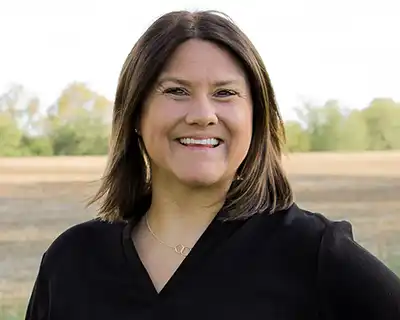Inflation Reduction Act almost doubles NRCS budget to supplement existing farm bill programs
About $22.8 billion in additional funding will be funneled into conservation agriculture during the next five years through the Inflation Reduction Act (IRA) and Partnerships for Climate-Smart Commodities (PCSC) pilot projects. This windfall adds to the roughly $4.5 million annual budget for USDA’s Natural Resources Conservation Service, bumping the department’s budget to almost $8.5 million annually.
“This is a once-in-a-lifetime investment into conservation,” Cosby told attendees at the 2023 Trust In Food Symposium during his keynote talk, “The Unprecedented Opportunity in Climate-Smart Agriculture.”
Cosby addressed sustainability professionals from agribusinesses, nonprofits, the retail channel and conservation-minded farm and ranch operations at the event Jan. 24. He implored attendees to work with the agency to help determine where and how the new funding will be spent as priorities get finalized in the coming months.
“Every day I get asked, ‘Can you get this done?’ And I say, ‘Yes, we’re going to do this.’ But I can’t do it by myself. It’s going to take all of us working together to make sure this happens,” Cosby says.
IRA Spending
$20 billion of the IRA is earmarked for conservation agriculture over the next 5 years. NRCS is responsible for implementing funds through the states. The funding will be infused into existing farm bill programs, including:
- $8.45 billion for Environmental Quality Incentives Program (EQIP)
- $4.95 billion for Regional Conservation Partnership Program (RCPP)
- $3.25 billion for Conservation Stewardship Program (CSP)
- $1.4 billion for Agricultural Conservation Easement Program (ACEP)
- $1 billion for Conservation Technical Assistance (CTA)
- $300 million for evaluation
Federal budgets that finalize awards to each state are expected in the next couple of weeks. States will prioritize new and backlogged projects based on a ranking system that sets priorities. Organizations and individuals can help set priorities by engaging with county-level working groups and state technical committees.
“I hope you are all on your county work group because that locally led process is important,” Cosby says. “That information flows up to the state technical committee, and I hope some of you are on the state technical committee because that’s where a lot of the decisions are going to be made about how this money gets spent.”
Outreach and Unmet Need
The NRCS receives more than 100,000 applications a year for its various programs. It typically has funding for about 25% of those requests. That’s created a backlog of applications that will be considered by each state office and prioritized along with new applications.
In addition to the backlog, it’s created frustration for farmers. Many have given up applying for conservation funding after unsuccessful attempts. But NRCS wants them back. To get them engaged, it funded a $50-million outreach program to get new producers through the door. Cosby calls this two-fold dynamic “unmet demand that includes a backlog” of interested producers. He’s looking for support from outside the agency to help producers understand how funding is available and who qualifies.
“We made the $50 million available, and we were able to sign 118 agreements with folks from different walks of life to help us with this outreach,” he says. “We’re going to do that again pretty soon, and it’s probably going to be a lot more than $50 million this next time.”
Technical Assistance
NRCS will need to hire 3,000 to 4,000 individuals over the next two years to be able to deliver the funding and provide the technical assistance producers need to be successful, Cosby says. That hasn’t been easy. Last year, the White House gave the agency direct hiring authority to bring on 1,500 employees. Through that process, it was only able to hire about 800, and it only retained about 500. Although Cosby expects the agency to be granted emergency hiring authority again, it struggles to find candidates that are qualified to advise producers on soil health.
This much-needed technical assistance is another way the private and nonprofit sectors can bolster the agency’s ability to deliver conservation behind the farmgate.
“We have over 2,500 offices with about 11,000 employees, and we’re going to need to grow it and maintain the science base in the work we do. We are a trusted agency,” he says. “Farmers trust us, but with that comes an obligation to make sure that you have well-trained employees who are going to be out there on the farms making the best scientific recommendations to make sure we get this conservation on the ground.”
PCSC Funding
An additional $2.8 billion will be funded in the next 5 years through the Partnerships for Climate-Smart Commodities program. This new, public-private partnership program epitomizes the agency’s efforts to spur innovation by empowering the private and nonprofit sectors to administer their own conservation pilot projects.
More than 140 pilot projects have been awarded from the $20 billion in proposals that the government received. Organizations “are going to be able to start implementing these practices in the spring, and my staff will have very little to do with those projects. These are the kinds of things we need to do [to accelerate implementation],” Cosby says.
Many of the PCSC awards focused on historically underserved producers, including minority farmers, veterans, women and socially disadvantaged producers. Many small-scale producers are unable to access federal assistance due to the complexity and length of the process. The agency is working to simplify processes to help smaller producers navigate the bureaucracy, which will ultimately benefit all farmers, ranchers, forest land owners and partners who are working with the agency.
“PCSC is going to teach us a lot on how we can simplify things,” Cosby says. “We’ve been cognizant of barriers to people participating. One of the things that I was charged with is looking at all these programs and simplifying things to make them less complicated for anyone to participate. RCPP is at the top of my list. We’ve been working on these things for the last two years to get us ready for this moment … But there is only so much I can do with the staff that I have, and if we are going to do this work, it’s going to take all of us.”



